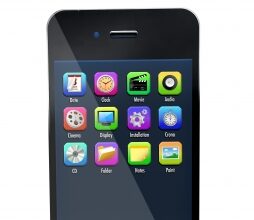As the US economy improves and the Affordable Care Act (Obamacare) begins to actually provide people with health insurance, experts are predicting a barrage of newly insured individuals to hit the healthcare system. Many pundits are expecting a bit of a bumpy ride as increased demands for service outstrips the capacity of the system to deliver them. I believe this opens a terrific opportunity for alternative delivery models such as urgent care centers and especially for retail healthcare providers—the so called mini-clinics that have been popping up in retail pharmacies, grocery stores and shopping malls. Operators of such facilities would be wise to capitalize on this unique window of opportunity that is coming their way in 2014. The question is, are they prepared to capture all these new customers and keep them coming back for more?
First and foremost, operators of retail clinics need to clearly understand where they fit in the ecosystem of healthcare delivery. They are not, nor should they be, a patient’s primary care provider. Rather, they should be viewed as a convenient adjunct or alternative for certain kinds of low acuity medical services. A retail clinic’s value proposition to the business where they are co-located is primarily to increase foot traffic and therefore drive ancillary sales of pharmaceuticals, merchandise, or services during the time customers are in the store. The value proposition to the customer is cost, quality, and convenience. To be successful, retail clinic operators must deliver an outstanding customer experience, one that goes well beyond what most patients have come to expect from traditional healthcare settings. This means excellence in every aspect of the customer experience from check-in to discharge. While most retail clinics today get good satisfaction scores from the patients who use them, there are numerous opportunities to make the experience even better. Here are some things to be thinking about:
 Check-in: How do your patients make appointments, or do they need an appointment at all? Can patients check-in in advance of arriving at your facility? In other words, can they pre-register for a visit on-line or on their smartphone? Do you offer on-line triage services to make certain that when patients show up at your clinic, you can meet their needs without referring them somewhere else?
Check-in: How do your patients make appointments, or do they need an appointment at all? Can patients check-in in advance of arriving at your facility? In other words, can they pre-register for a visit on-line or on their smartphone? Do you offer on-line triage services to make certain that when patients show up at your clinic, you can meet their needs without referring them somewhere else?
Service: How do you manage wait-times? Do you provide an on-line service that gives real-time information about patient wait-times? If patients are kept waiting, do you provide a paging or messaging service so they can shop in your store while they wait? How well connected is your staff? Have you thought about deploying a unified communications solution to improve staff communication, coordination and collaboration? Have your thought about using this same technology to create a federated network with local hospitals, clinics and healthcare providers to improve the flow of expert advice, communication or referrals when needed.
Aftercare: Have you thought about using technology to improve the discharge process, monitor compliance with patient education or medications, measure satisfaction with services provided, provide a personal health record, or provide a means for follow-up with patients long after they’ve been seen in your facility? Most of your customers are now carrying a smartphone. Are you thinking about ways to incorporate these devices into the services you offer?
These are just a few of the opportunities where the right balance of technology combined with staff excellence will keep customers coming back to your facility. For that matter, these are areas of focus that all providers of care, including traditional clinics and hospitals, need to be thinking about as they strive for excellence in patient care delivery and customer satisfaction. Opportunity is knocking. Open the door.









